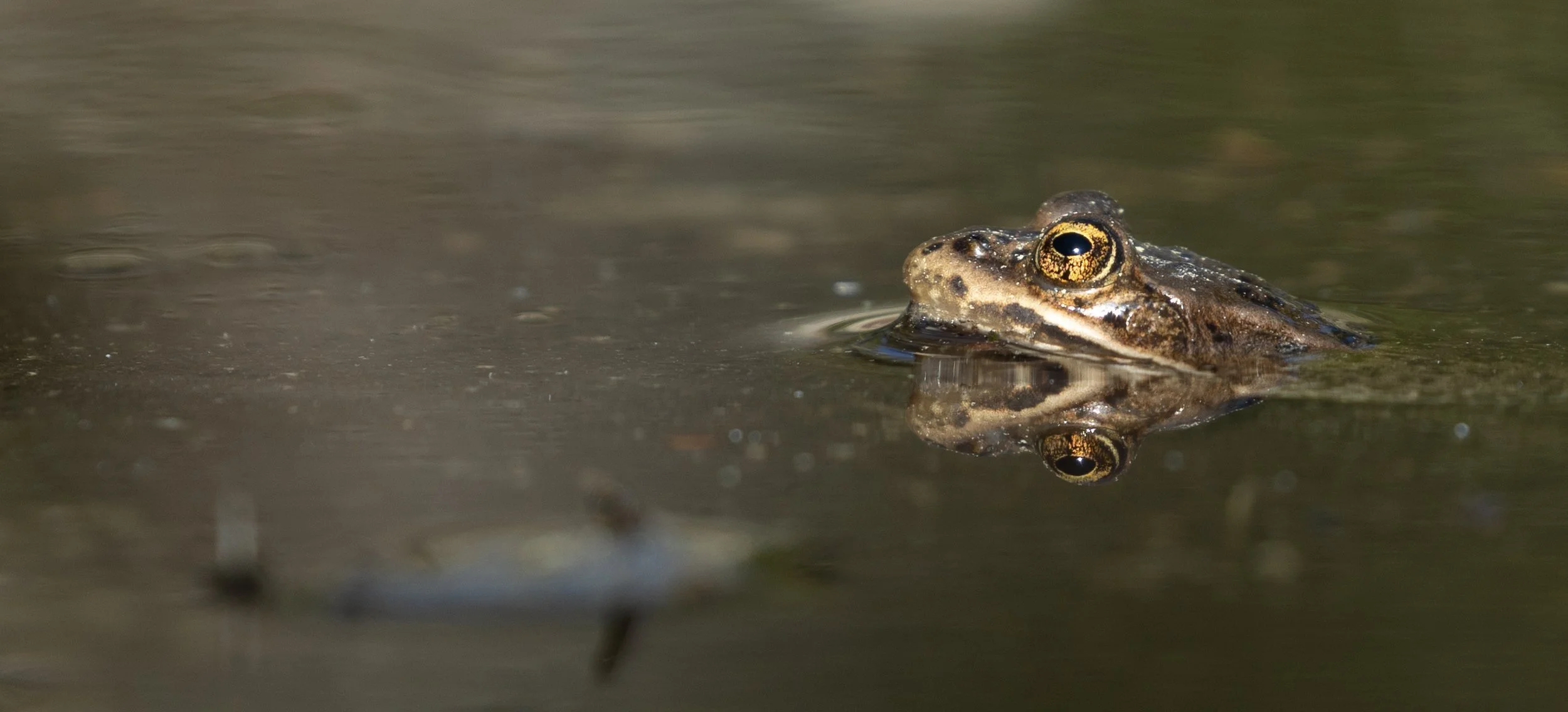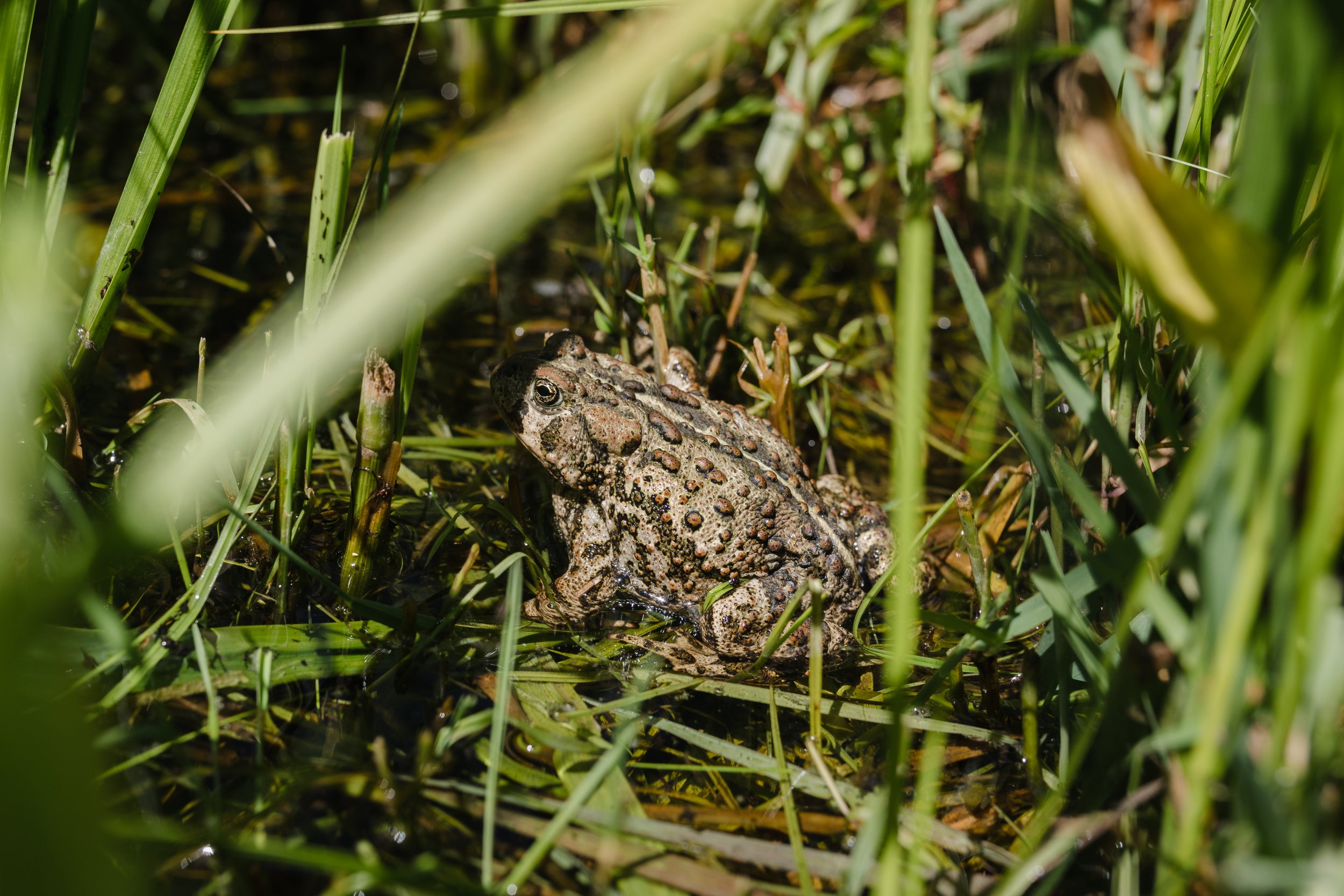Reptiles and amphibians, also called “herpetofauna” or “herps,” are experiencing rapid declines on a global scale, and in the arid West amphibians in particular are subject to loss of habitat.
These species are often underrepresented in conservation planning efforts, due in part to their cryptic nature that makes them difficult to find relative to other taxa. It is difficult to conserve biodiversity if you do not first understand where they occur on the landscape and what threats they are encountering.
Eastern collared lizard. Photo by Janice Gardner.
Herpetofauna species listed as Species of Greatest Conservation Need (SGCN) in Utah’s Wildlife Action Plan, are often on the list due to a lack of information on their locations and the condition of those habitats.
2025 project sticker, designed by Valerie Jar.
Sageland Collaborative and the Utah Division of Wildlife Resources have developed community science protocols to determine the range and status of Utah’s overlooked herpetofauna species. Through the Utah HerpSearch, volunteer community scientists can support the efforts of state biologists by consistently logging observations and conducting habitat surveys, effectively putting Utah’s herps on the map.
Community science-gathered data on where species are distributed will allow government agencies to plan habitat restoration and species conservation practices and policies through a clearer lens.
Volunteer Resources
2025 Training Webinar:
Guide to Photographing Herps of Utah
Did you survey at an area on our Choose Your Own Adventure Map, or another cool area? Fill out this field log to let us know what you saw (or what you didn’t!) and help us better understand site conditions.
iNaturalist
Download iNaturalist - for iOS - for Android
Join the Herps of Utah project on iNaturalist
If you see or hear any amphibians or reptiles in Utah, upload those observations to iNaturalist!
Species of Interest
Columbia spotted frog. Photo by Sierra Hastings.
Habitat: Most likely to be observed around small pools and ponds with little to no current that are surrounded by dense vegetation. Floating vegetation is also often present with the pond bottom typically made up of fine silt.
Habitat: Most likely to be observed at high elevations (above 7,200ft) in or near slow moving streams, wetlands, desert springs, ponds, lakes, meadows, and woodlands.
Learn more and participate in the Western Toad Project
Recommended Herpetofauna Field Guides
Choose Your Own Adventure Map
These sites represent potentially suitable habitat for some of Utah’s overlooked species in conservation need, many of which are charismatic and cryptic.
Download ArcGIS Field Maps: for iOS - for Android
Once you’ve downloaded the ArcGIS app, click here to access the HerpSearch map.
Choose a highlighted grid cell (whether it’s a convenient location or an area of personal interest);
Head out with a buddy to survey suitable habitat within that grid cell, taking note of habitat conditions and presence (or lack of!) herpetofauna in the area;
If you find herps while surveying, take photos and/or audio recordings and upload them into the Herps of Utah project on iNaturalist. Within your observation, you may add habitat and accessibility notes for the site;
If you do not observe any species, that data is valuable too! Please fill out our Field Log to help us better understand site conditions and to let us know what you did (or did not) see!
Visit survey areas throughout the field season at your convenience. You can stick to the same grid cell or explore areas across the map.
This map includes starting locations based on known locations and habitat preferences for our species of interest. These areas are just a starting point, and we encourage you to explore beyond these locations based on where you see suitable habitats.
After a few surveys, you will likely begin to understand what suitable habitat looks like for a certain species and be able to identify and seek out those habitats. Feel free to keep exploring and expanding your search radius, but remember to avoid trespassing, and respect all laws and regulations of the area.
Conserve Utah’s herpetofauna by donating today.
UDWR field technician with a boreal toad at Utah’s Strawberry Reservoir. Photo: Sierra Hastings
At a Glance
Field Season: March – September
Volunteer Commitment Level: Flexible and varies, depending on individual volunteer interest. Can visit recommended sites as desired. Requires the ability to navigate to independent sites, walk on uneven surfaces, and potentially hike.
Training: Yes — participants must attend an in-person training or watch the 50-minute training video to join the project.
Requirements: Field work, vehicle, hiking natural terrains.
Communications: We will be sending out emails once a month about the project during the season. Sign up to receive these emails. You can also check out our project updates below.
If you have any questions in the meantime, want to know about site accessibility, or otherwise need further support, please contact us.
American bullfrog, an invasive species in Utah. Photo by Sierra Hastings.
Project Updates:
Check back in Spring/Summer 2025!
Other Herpetofauna in Conservation Need
Sharing observations of these species on iNaturalist is incredibly valuable in understanding their distribution and threats they may face. Learn more about these species at the links below.










